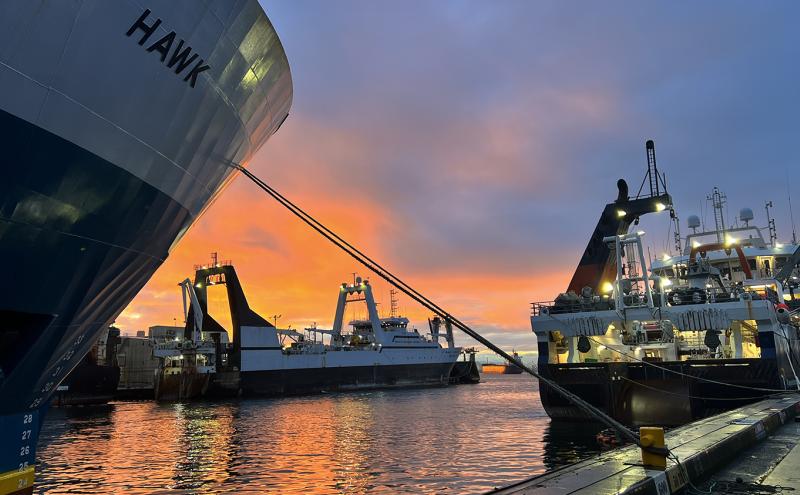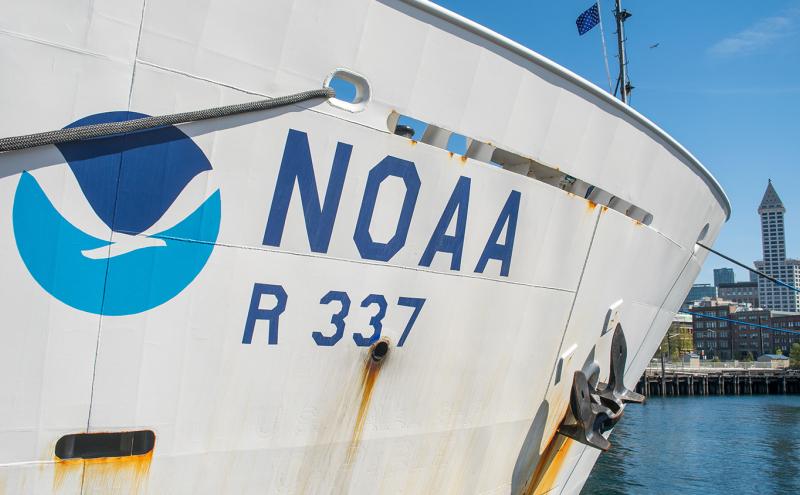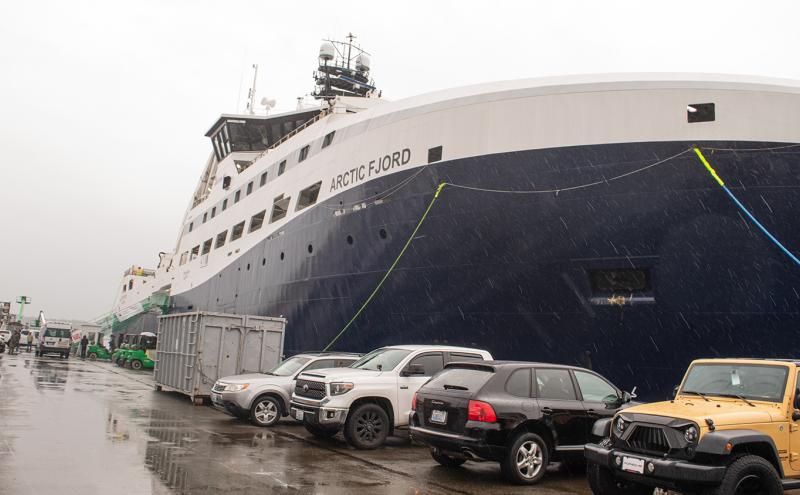
After a nearly five-year journey with many twists and turns, the Arctic Fjord arrived in its homeport at the Port of Seattle’s Pier 91 this fall.
The 328-foot-long catcher processor, made for the Seattle-based Arctic Storm Management Group, replaces an older vessel with the same name and brings with it an ocean of efficiency and innovative and sustainable features. It’s faster, safer, more maneuverable, and more comfortable than the vessels before it.
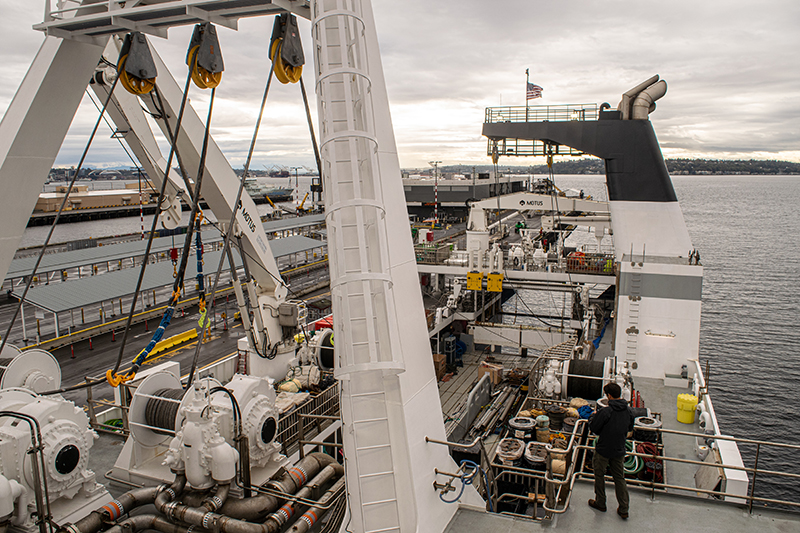
Designed by Kongsberg Maritime and Rolls Royce and constructed by Thoma-Sea Marine Contractors in Louisiana, the Arctic Fjord is the first new vessel for the wild Alaska pollock catcher processor fleet built in the United States in over 30 years. It’s also the largest fishing vessel ever built in the United States. In the wake of pandemic and hurricane-related delays, the Arctic Fjord will soon make its long-awaited debut and set sail this month for the Bering Sea as the North Pacific Fishing Fleet begins its Alaska pollock Season A.
Find out what makes the Arctic Fjord such a catch.
1. Creates every possible fish-related product right on board
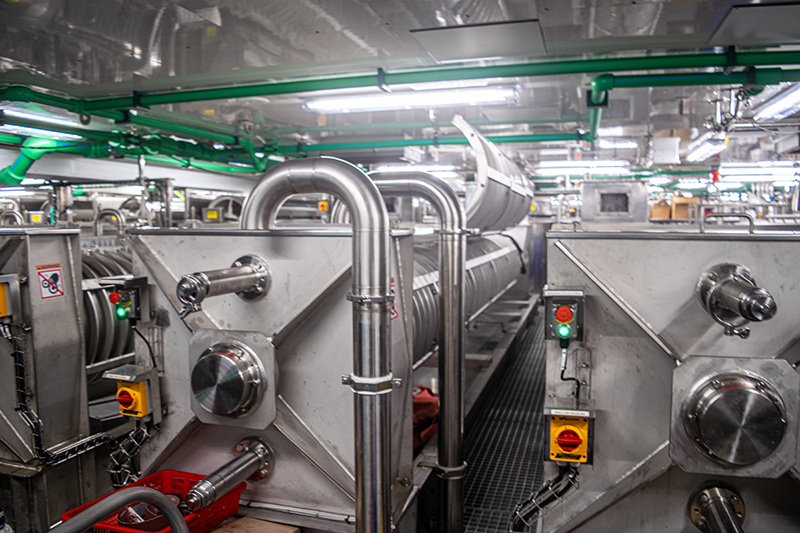 The Arctic Fjord has a complete fish processing plant right on board. This means the crew harvests, processes, and freezes the catch without ever leaving the ship. It is processed into fish meal, fish oil, surimi, and fillet, and frozen within hours of hitting the deck. You can find these products in sushi, McDonald’s Filet-O-Fish sandwiches, high-quality pet food, fertilizer for crops, health supplements, and more.
The Arctic Fjord has a complete fish processing plant right on board. This means the crew harvests, processes, and freezes the catch without ever leaving the ship. It is processed into fish meal, fish oil, surimi, and fillet, and frozen within hours of hitting the deck. You can find these products in sushi, McDonald’s Filet-O-Fish sandwiches, high-quality pet food, fertilizer for crops, health supplements, and more.
Did you know? The Arctic Fjord has space for it all! Three-story holds store up to 232 metric tons of fish meal and 130,000 gallons of fish oil. Similar ships typically have the capacity for 970 tons of frozen fish but no ability to make fish meal or fish oil.
2. Catches more fish in less time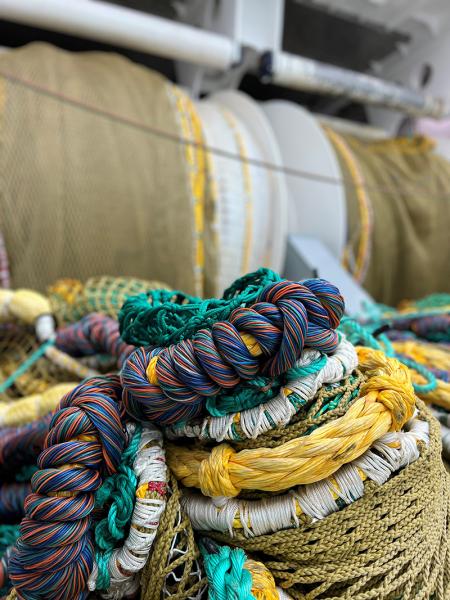
The Arctic Fjord catches and processes more fish faster than other catcher processors. How? The Arctic Fjord has four net reels installed — two on each side of the deck. As they bring up a full net of fish on one side, they can shoot another net out on the other. As a result, fishing time is not interrupted while emptying nets and there is less lag between when the net is pulled and deployed.
Did you know? Fishing nets target 200 tons of fish at a time. In full production, the nets can pull in between 750-1000 tons of fish a day.
The freezing capacity and efficient systems of the Arctic Fjord also allow more fish to be processed in less time. There are six cutting and processing lines. This helps remove any bottlenecks and gets fish ready to be frozen more quickly. Once they are ready to freeze, two cold storage decks onboard store at least 2,000 tons of fish.
3. Designed for a speedy and safe ride
The Arctic Fjord is a swift ship for its size thanks to the engine power and ship design. On its journey from Louisiana through the Panama Canal to Seattle, the vessel’s average speed was 16.4 knots. It has a maximum speed of 19.6 knots. The ship's bow, tall with a smooth topside, is designed for bearing bigger waves and rougher seas. This results in a smoother and safer ride!
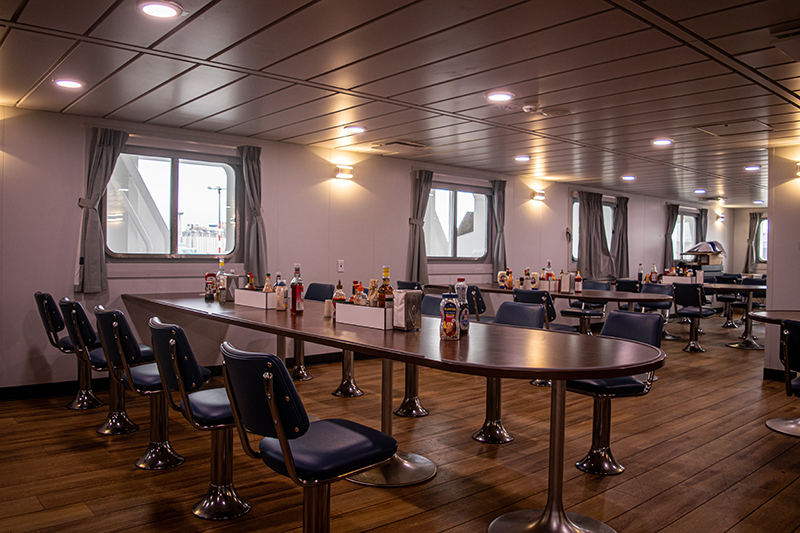 4. Provides a more comfortable experience for the crew
4. Provides a more comfortable experience for the crew
The vessel houses its 152 crew members in comfortable “suite style” living spaces. It features new, spacious dining and socializing areas and a fully equipped hospital facility on board. The design also allows the crew to perform more tasks indoors and out of the weather.
5. Innovations increase efficiency and sustainability
Here are a few stand-out features that save labor and increase sustainability on board: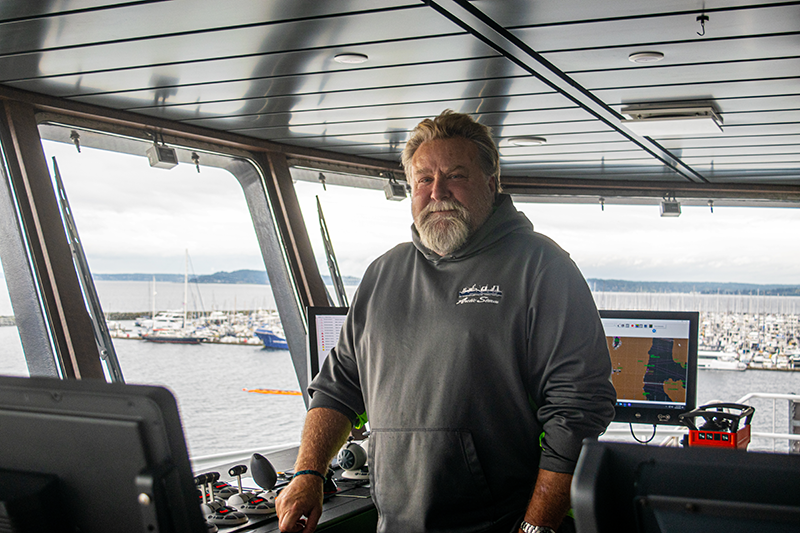
- Computer-assisted processing equipment increases efficiency by measuring fish and sorting them into the right machine, recovering the maximum flesh and eliminating waste
- Machinery is used to stack frozen blocks of surimi and fillet on pallets wrapped in plastic and send them by elevator down to cold storage equipped with forklifts
- The ammonia-CO2 refrigeration system freezes fish pallets more quickly
- A live feed camera in the nets allows the wheelhouse to monitor what’s entering the net. It provides target and bycatch information to better inform decisions whether to set the net in the same area again or to move to a new area

